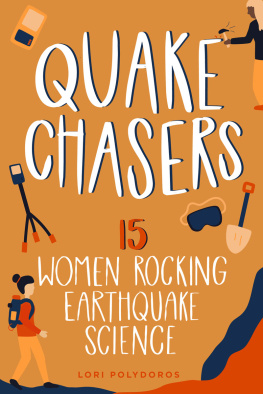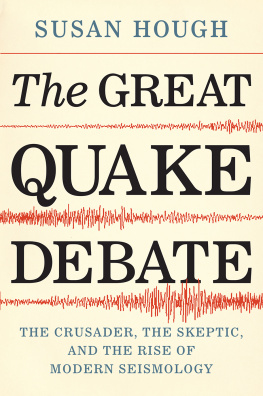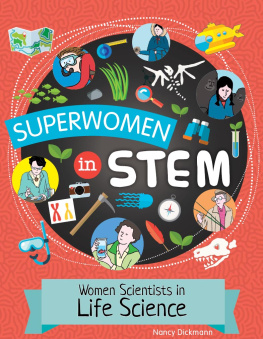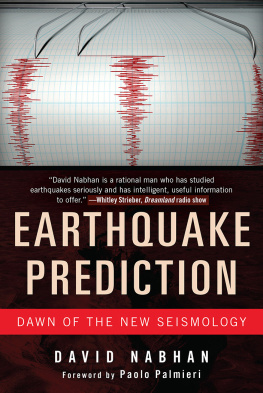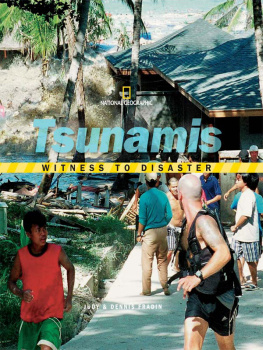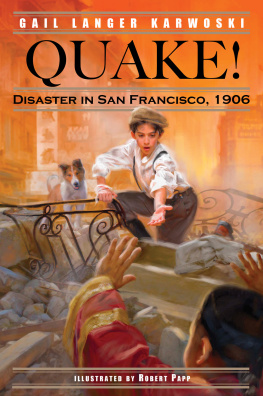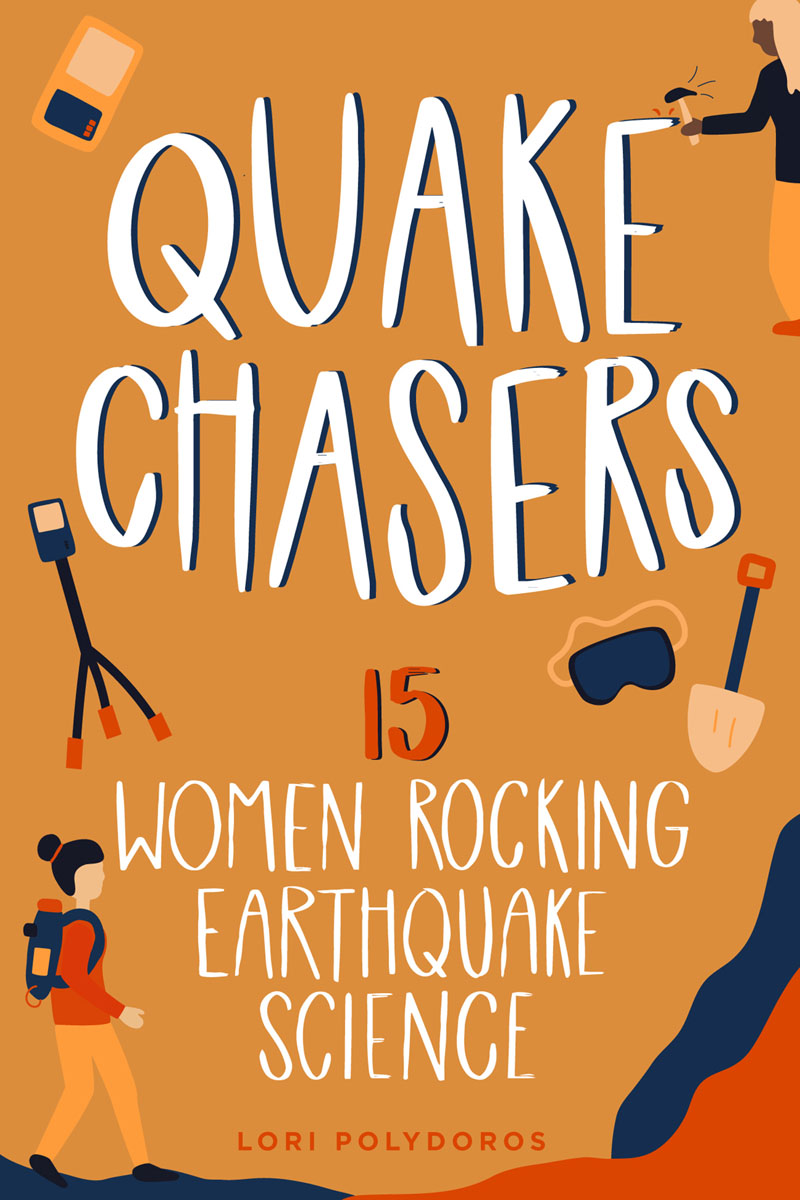
Copyright 2022 by Lori Polydoros
All rights reserved
Published by Chicago Review Press Incorporated
814 North Franklin Street
Chicago, Illinois 60610
ISBN 978-1-64160-646-2
Library of Congress Control Number: 2021949118
Cover, illustrations, and interior design: Sadie Teper
Printed in the United States of America
5 4 3 2 1
To all the future scientists the best is yet to come.
Contents
Introduction
Sometimes, the world needs saving. When nature wreaks havoc with earthquakes, tsunamis, and erupting volcanoes, we want a superhero to fly out of the sky save the day.
But what if these superheroes lived and worked among us? What if, instead of flying and superstrength, these world savers use laboratories and laptops? These brave women are earthquake scientists who venture into the field and experiment in labs. They use advanced technology to translate data on their laptops gathered from postdisaster recovery sites to find out what caused that earthquake, triggered that tsunami, or led that volcano to erupt. These quake chasers can be found scrambling to install seismometers on erupting volcanoes, arctic glaciers, or deep in the sunbaked desert. They measure ground motion, observe geological structures of the earth, tell the stories of survivors, and communicate vital data to the public that helps people prepare for potential seismic events. These women help save lives.
Donyelle Davis, a public affairs officer from both the US Geological Survey and the US Navy Reserve, is afraid of heights yet needed to get information about the eruption of Hawaiis Klauea volcano out to the public. With eyes closed (only at first), she put her fears aside and, in a tiny aircraft, flew over the bubbling lava to record images of the destruction. Or take geophysicist Dr. Marianne Karplus, who journeyed to Nepal after a magnitude 7.8 quake killed almost 9,000 people. In order to record vital information about aftershocks, she placed seismometers across the rupture zone. While she was working, the ground shook with aftershocks, creating cracks in the walls, but she didnt stop working. Another quake chaser is geologist Dr. Wendy Bohon, who you might find deep in a trench carefully reading the earths history through rocks or mapping massive, inaccessible peaks in South America with satellite technology, all to gather data along fault lines that could reveal important facts about future earthquakes. This information can help people prepare and stay safe.
These women are trailblazers. They are seismologists, geophysicists, geologists, physicists, volcanologists, professors, social scientists, and communication specialists. They come from different specialties, yet their commonalities tie them together: Strength. Curiosity. Persistence. They never give up, even when a door closes. Nor are they afraid to call out gender or racial injustice when they see itand unfortunately for women in STEM (science, technology, engineering, mathematics) fields, these inequities can be common.
Many of these scientists know each other, whether working together in the field or collaborating on projects worldwide. They respect each other. Rely on each other. Theyve become mentors and have found their own inspiration and strength through other women in the field. Traveling the world with a special lens for saving lives, most have carefully crafted a deep respect for cultures, languages, and interesting food (plus karaoke it seems!). Through science-related and fictional books and industry journals and newsletters, many communicate their messages and share their camaraderie for humanizing science, opening doors for other women, and inspiring others to chase their dreams.
Quake Chasers focuses on just 15 of these amazing women. There are so many more incredible women in earthquake science, in all fields of science, and in every aspect of our world. We are just waiting to meet them!
So for now, lets hear it for the quake chasers!
Fifteen women who rock earthquake science.

Part I
SOS: The Secrets of Seismic Hazards


Annemarie Baltay Sundstrom: The Power of Predicting
Award-winning geophysicist Dr. Annemarie Baltay Sundstrom spends her days measuring the ground motion of the earth. Yet you might find her doing some unusual things, like singing karaoke in Japan and belting out the 1980s pop hit 99 Red Balloons in German! Whether skiing down a scary mountain ridge or analyzing data to better understand earthquakes, Annemarie has pushed herself further than she ever imagined. Her curiosity and confidence, encouraged by her scientific parents, have taken Annemarie down a road of discovery. From an early age shes been who shes wanted to be and hasnt been afraid to speak her mind. Whether doing experiments in the garden with her mother or making furniture in her fathers woodshop, Annemarie was given the chance to follow her dreams.
As a seismologist with the US Geological Survey, Annemarie asks questions like: Why do some earthquakes behave differently? How do earth materials change the (recorded) ground motion/shaking? Using this data, Annemarie creates hazard maps that show earthquake danger zones and help warn people about possible disasters in the future. At her computer, Annemarie analyzes data from big events like the magnitude (M) 9.1 earthquake and the tsunami that followed in Sumatra in 2004. This earthquake, which killed 230,000 people, was the third largest in the world since 1900. She also has analyzed the magnitude 9.1 quake in Japan in 2011. It trigged a tsunami with waves as tall as a 38-story building, flooding more than 200 square miles of land and leaving approximately 20,000 people dead or missing and half a million without homes. Though these events are tragic, Annemarie knows her work can make a difference. Walking this path has not always been easy, but Annemarie is grateful for all the support and opportunities she has received, even when facing her own doubt and uncertainty. For her, its all worth it. Its always been about uncovering the mysteries below the earth and using this information to save lives.
Annemaries parents told her that she could be whatever she wanted, and for that she is forever grateful. Her father, a particle physicist who worked at Yale University (and collaborated with other scientists at Stanford University), and her mother, a seventh-grade science teacher and college writing instructor, . Annemarie had a lot of freedom and remembers happy summers at Stanford with her mother, picking berries, drawing, building, or doing backyard experiments, like mixing gross ingredients such as vanilla and vinegar and making her mom drink it! In Connecticut, she grew up by the water, where she learned to swim and sail. In the marsh nearby, she played tag in the mucky trails and looked for frogs and snails all day long. Annemaries dad gave her notebooks full of math problems for long car rides and allowed her to use his woodshop, where she built furniture (for people and for her toy figurines) and learned to solder and work with metal too.
Next page
